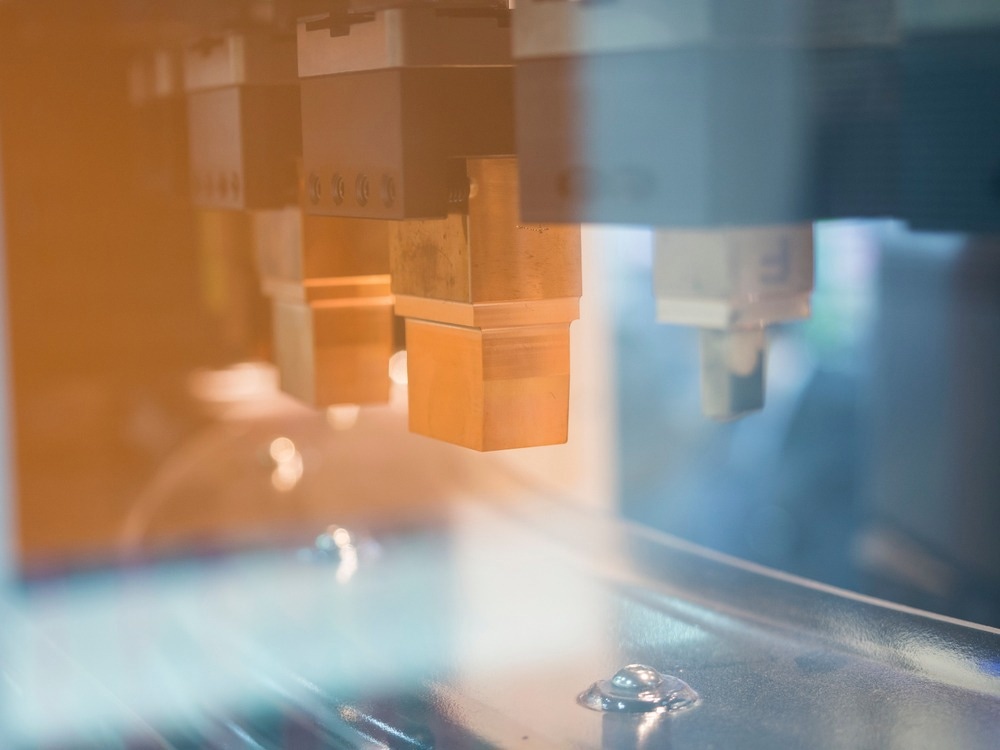A study led by Prof. Shaohua Shen of the International Research Center for Renewable Energy, State Key Laboratory of Multiphase Flow in Power Engineering, Xi’an Jiaotong University highlighted a simple surface modification of the Cu electrode using poly (α-ethyl cyanoacrylate) (PECA) that has ester (-COOR) and electron-accepting cyano (-C≡N). These groups are derived from the anionic polymerization of surface-adhered ECA. The goal was to stabilize the key intermediates for high selective C2+ production during eCO2RR.

Image Credit: Aumm graphixphoto/Shutterstock.com
These studies carried out the synthesis of the catalyst, structural characterizations, assessment of the catalytic performance, and DFT calculations.
The production of valuable fuel or chemicals using electrochemical CO2 reduction reaction (eCO2RR) offers a sustainable and carbon-neutral solution to the pressing problems of renewable power storage and global warming. It is still difficult to achieve high selectivity in eCO2RR toward multicarbon (C2+) compounds that are economically desirable, such as C2H4, C2H5OH, n-C3H7OH, etc.
Among the metallic catalysts developed for enabling eCO2RR to produce C2+ products, metallic copper (Cu) is most promising. However, the polycrystalline Cu electrode faces challenges with poor selectivity due to the diverse reaction intermediates and multiple reaction pathways.
Compared to the Cu electrode, the Cu-PECA electrode has a higher selectivity for C2+ products, with FE reaching 72.6% higher at –1.1 V compared to RHE. In a flow cell, consistent C2+ generation with a high FE of 76.3% and a high current density of –145.4 mA cm−2 could be attained at –0.9 V vs. RHE over the Cu-PECA electrode.
Electrochemical and in-situ spectral investigations, as well as theoretical calculations, revealed that PECA decorated with -C≡N and -COOR groups on the Cu electrode, assumed to distribute the interfacial electron density and raise the central energy level of the d-band (Ed) of Cu active sites, inhibiting the *H adsorption and stabilizing the *CO adsorption, enabling the subsequent C-C coupling and eventually leading to the selective generation of C2.
This study should help design surface-decorated electrocatalysts or electrodes that direct the surface adsorption behaviors of reaction intermediates for eCO2RR toward C2+ generation with high activity and selectivity.
Journal Reference:
Shi, Y, et. al. (2024) Polyacrylate modified Cu electrode for selective electrochemical CO2 reduction towards multicarbon products. Science Bulletin. doi:10.1016/j.scib.2024.06.014